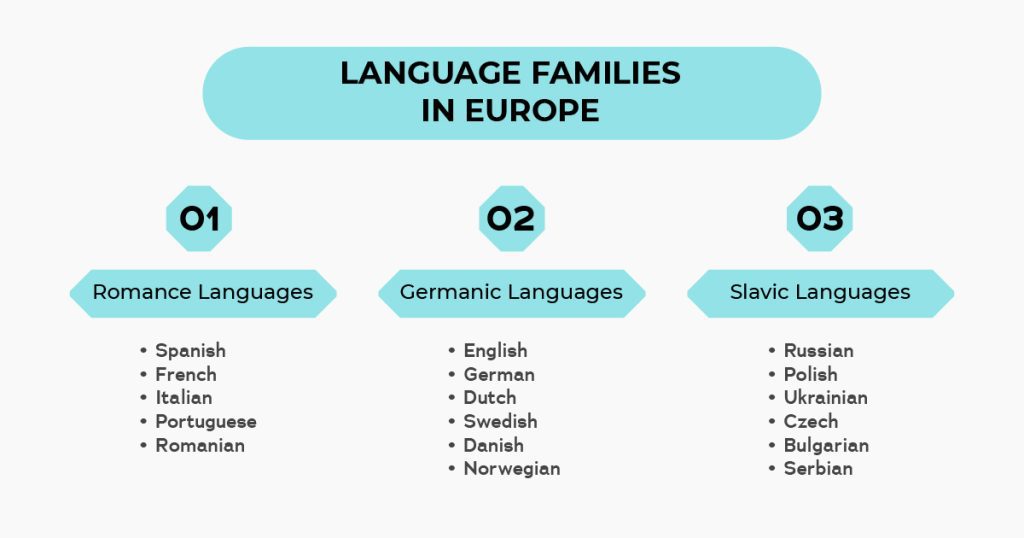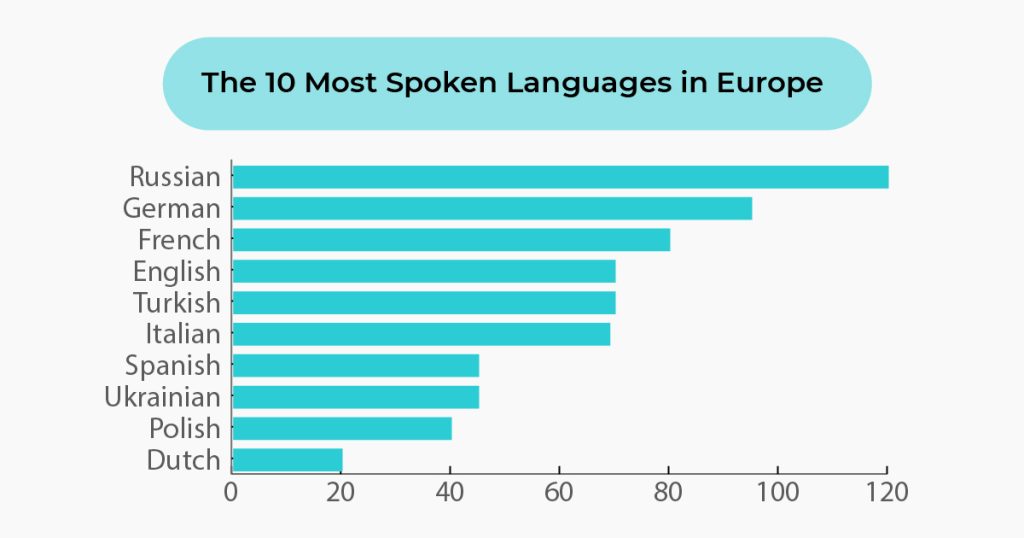Languages Spoken in Europe: A Comprehensive Guide for Businesses
Did you know that Europe is home to over 200 languages? It’s a melting pot of different languages mostly coming from this big language family called Indo-European. This remarkable diversity shapes the continent’s cultural identity and poses both opportunities and challenges for businesses looking to enter and thrive in European markets.
As one of the world’s largest economies, Europe presents an attractive prospect for global businesses. However, the key to unlocking this potential lies in effective localization—adapting your products and communication to resonate with the local audience. Understanding more about the languages spoken in Europe is crucial for successful communication, brand perception, and market penetration.
In this blog post, we will delve into the linguistic dynamics that shape Europe. Join us as we navigate the fascinating world of Europe’s languages and uncover strategies to connect with diverse audiences across the continent.
The Official Languages of Europe
The concept of official languages within the European Union is an essential aspect of its organizational framework. To be an official language of the European Union, the language must be both an official and a working language within a member state. For example, French is the official language in France, which is a member state of the European Union, and thus, it is also the official language of the EU.
By contrast, there are many minority languages spoken by groups in countries throughout the EU. While these minority languages are important to those groups, they are not the working languages of the governments of those countries; thus, they are not the official languages of the EU.
To ensure effective communication and inclusivity within its diverse member states, the EU recognizes a set of official languages. These languages are used for official communication, legislation, and documentation across all EU institutions, ensuring that every citizen has access to information in their native language.
A List of the EU’s Official Languages
The following is a list of the 24 official languages of the EU:
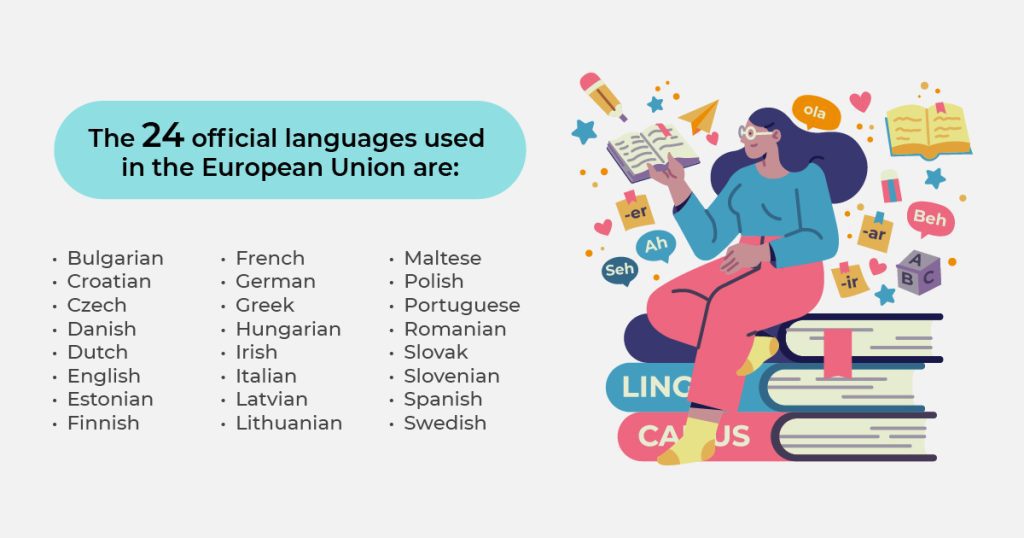
- Inclusivity: Every EU citizen can access information, participate in discussions, and understand legislative processes in their native language.
- Transparency: Official documents, laws, and communications are available in all official languages, promoting transparency and understanding.
- Cultural Preservation: The multilingual approach supports the preservation and promotion of Europe’s rich linguistic diversity.
- Efficient Governance: Facilitates smoother interactions and decision-making processes within EU institutions by respecting linguistic diversity.
For businesses operating in the EU, understanding and respecting this linguistic diversity is crucial for compliance with EU regulations and effective communication with both officials and consumers across member states.
To understand today’s multilingual business environment in Europe, we must first look back in time examining the factors that have shaped Europe’s complex linguistic landscape
The Linguistic Impact of Migration & Globalization in Europe
Europe’s linguistic landscape is super diverse! Centuries of people moving around, conquering different areas, and the world becoming more connected have all shaped how languages are spoken across the continent.
Let’s take a quick trip through time and explore some key moments that influenced European languages!
Timeline of Major Events Shaping the European Language Landscape
Ancient Times (1st Century BCE – 5th Century CE)
The expansion of the Roman Empire spread Latin, laying the foundation for the Romance languages (mentioned in the below section).
Medieval Period (5th – 15th Centuries)
Migrations and conquests (e.g., Viking expansions, Germanic tribes) contribute to the diversification of languages in Europe.
Age of Discovery (15th – 17th Century)
Global Spread of European Languages Due to European Colonization:
- Spanish and Portuguese: Spread to the Americas, Africa, and Asia.
- English and French: Establish strongholds in North America, Africa, and parts of Asia.
Colonial Era (18th – 20th Century)
- Further Expansion: European languages are entrenched in colonies worldwide, reinforcing their global influence.
Modern Era (20th Century)
- Two World Wars and subsequent geopolitical shifts lead to new migration patterns within Europe.
- Increased migration from former colonies brings diverse language communities to Europe
 Globalization and the Internet (Late 20th Century – Present)
Globalization and the Internet (Late 20th Century – Present)
- Globalization and the internet accelerated the rise of English as a global lingua franca dominating international business, education, and online communication.
- Continued migration and intercultural exchange shape a complex and evolving linguistic landscape in Europe
Major European Language Families and Their Distribution
Understanding language families is crucial for grasping the intricate web of linguistic relationships that shape communication across regions.
But what are language families?
A language family is a group of languages that share a common ancestral origin, offering insights into their historical development and connections. The study of these families helps us trace the evolution of languages and their spread across different geographical areas.
Dominant Indo-European Language Family
The Indo-European language family is the most widespread and influential in Europe, encompassing several major branches. This family includes many of the languages spoken in Europe and is a key focus for businesses and organizations aiming to localize their operations in Europe.
Let’s get to know the key language families throughout the European continent:
Romance Languages
Spanish, French, Italian, Portuguese, Romanian
Germanic Languages
English, German, Dutch, Swedish, Norwegian, and Danish language
Slavic Languages
Russian, Polish, Ukrainian, Czech, Bulgarian, Serbian
Other Language Families in Europe
While the Indo-European family is predominant, Europe is also home to other significant language families:
- Uralic Languages
- Finnish: The official language of Finland, also spoken in parts of Sweden.
- Hungarian: The official language of Hungary.
- Estonian: The official language of Estonia.
- The Basque Language
Basque: A unique language spoken in the Basque Country, an area straddling northern Spain and southwestern France. Unlike any other European language, it is considered a language isolate, with no known relatives.
Understanding these languages and their distribution is essential for effective localization and communication strategies in the European market. As each contributes to the continent’s cultural heritage
Now you might ask yourself: Where should my business start? Which language or country is the most important to target? The next section is designed to help you make an informed decision by presenting the top 10 languages spoken in Europe, regardless of their language family.
Let’s continue reading to find out more.
Top 10 Languages Spoken in Europe:
1. Russian
Russia has the largest population among European countries, with a total population of 144.7 million people. About 75% of Russia’s population lives in European Russia, making Russian the most commonly spoken language in Europe, especially in the eastern part of the continent.
The Russian language has 106 Million native speakers.
Countries Where It’s an Official Language: Russia, Belarus, Kazakhstan (partly in Europe), and Kyrgyzstan
2. German
Germany’s robust economy is the largest in Europe and the fourth largest globally, making German language a crucial language for business and trade.
Known for its significant cultural and economic influence, it’s the second most spoken language in Europe in terms of with total number of native speakers with 97 Million.
Countries Where It’s an Official Language: Germany, Austria, and parts of Switzerland, Belgium, Luxembourg, and Liechtenstein
3. French
Next on the list of the top 10 languages spoken in Europe is the French language, with around 76 million native speakers.
Countries Where It’s an Official Language: France and Monaco
4. Italian
Italian ranks as the fourth most commonly spoken language in Europe and has 65 million native speakers across the continent. The Italian language is associated with high-end branding, luxury goods, classical music, and fine art. The language itself is musical and expressive, reflecting the passionate nature of Italian culture.
Countries Where It’s an Official Language: Italy, San Marino, and Switzerland
5. English
Waited for this language too long, right? It was expected to be the first as English is the global lingua franca, playing a crucial role in business, science, technology, and entertainment.
Although English has about 360 million people speakers worldwide as their first language, it has only about 60 million native speakers in Europe making it the fifth most common language on the continent.
Despite having fewer native speakers in Europe than in Russia, English’s global influence and widespread use make it indispensable for businesses looking to expand internationally.
English’s relatively simple grammar and rich vocabulary make it accessible for learners, aiding businesses in quick adaptation to English-speaking markets. However, the language’s nuances require skilled translators for precise, culturally appropriate communication, essential for successful business expansion.
Countries Where It’s an Official Language: United Kingdom, Ireland, Malta, Jersey, and Gibraltar
6. Spanish
Spanish, with approximately 38 million native speakers in Europe, is a language of significant global importance. As the second most spoken language in the world by native speakers and fourth by total speakers, it provides a bridge to over 20 countries, primarily in Europe and Latin America.
Spanish Language is more than just a language. It’s deeply intertwined with a rich cultural tapestry that significantly influences business interactions. Understanding and appreciating Spanish culture can help build strong business relationships.
Countries Where It’s an Official Language: Spain
7. Polish
There are around 38.5 million native Polish speakers in Europe. Most of them come from Poland, but you can also find native speakers in the Czech Republic, Belarus, Ukraine, and other nearby countries.
Its Slavic roots bring about a complex system of phonetics and grammar that language learners may find challenging yet rewarding.
Poland’s central location in Europe elevates the importance of the Polish language in regional commerce and international relations. The language serves as a vital communication tool for businesses operating in or expanding to Central Europe.
For companies eyeing the Central European market, proficiency in Polish can provide a notable advantage, facilitating stronger local connections and more nuanced business negotiations.
Countries Where It’s an Official Language: Poland
8. Ukrainian
There are approximately 32.6 million native Ukrainian speakers, most of whom reside in Ukraine. However, Ukrainian speakers can also be found in Kazakhstan, Moldova, Poland, Romania, Lithuania, and Slovakia.
Countries Where It’s an Official Language: Ukraine
9. Dutch
About 22 million Europeans speak Dutch as their mother tongue language.
Dutch gained a reputation as the language of merchants due to the Netherlands’ significant role in global trade during the Dutch Empire. Today, it continues to offer substantial benefits in commerce and industry, with its straightforward grammar and close relation to English and German as added advantages for native speakers of those languages.
Countries Where It’s an Official Language: Netherlands and Belgium
10. Romanian
Romanian is taking the last language on our list. It is one of the official languages of the European Union with 24 Million speakers in Europe.
Countries Where It’s an Official Language: Romania and Moldova
Challenges and Considerations for Businesses
Localizing for European markets presents several challenges due to the continent’s linguistic diversity, regional variations, and cultural nuances. Businesses must navigate a complex landscape where multiple languages and dialects coexist, each with its unique cultural context.
Here are some key challenges that businesses may face:
- Variety of Languages: Europe is home to a multitude of languages and dialects. Selecting the right languages for localization is crucial to effectively reach and engage the target audience.
- Regional Variations: Even within a single language, there can be significant regional differences in vocabulary, idioms, and expressions. These variations must be considered to ensure the content resonates with local audiences.
- Cultural Nuances: Understanding cultural subtleties is essential. What works in one country might not be appropriate in another. Businesses need to be aware of local customs, traditions, and social norms to avoid miscommunication and build trust.
Then what is the solution?
To ensure accuracy, cultural sensitivity, and effective communication, businesses should invest in professional translation and localization services. These services provide:
- Accurate Translations: Professional translators ensure that the content is translated accurately, preserving the original message and intent.
- Cultural Sensitivity: Localization experts understand the cultural context and can adapt the content to fit local customs and norms.
- Effective Communication: Proper localization enhances communication, making the content more relatable and engaging for the local audience.
By addressing these challenges, businesses can successfully navigate the complexities of European markets and achieve effective localization.
But why handle it all alone when you can learn from others’ expertise?
Laoret Your Ticket to The European Markets
Here at Laoret, we possess expertise in over 120 languages, making us well-equipped to assist you in navigating the diverse and complex European markets.
With our deep understanding of linguistic diversity and cultural nuances, we can provide valuable insight and localization services to help your business effectively engage with audiences across Europe.
Partnering with us ensures that your communication and products resonate with local consumers, paving the way for successful market entry and expansion in European territories.
Contact us now! And let’s discuss how we can help.

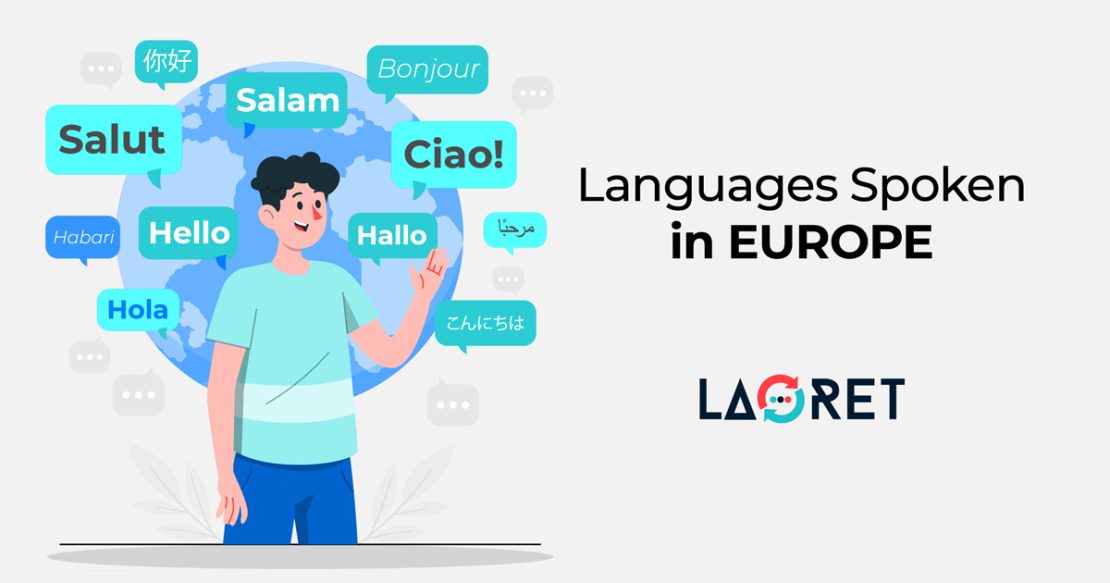
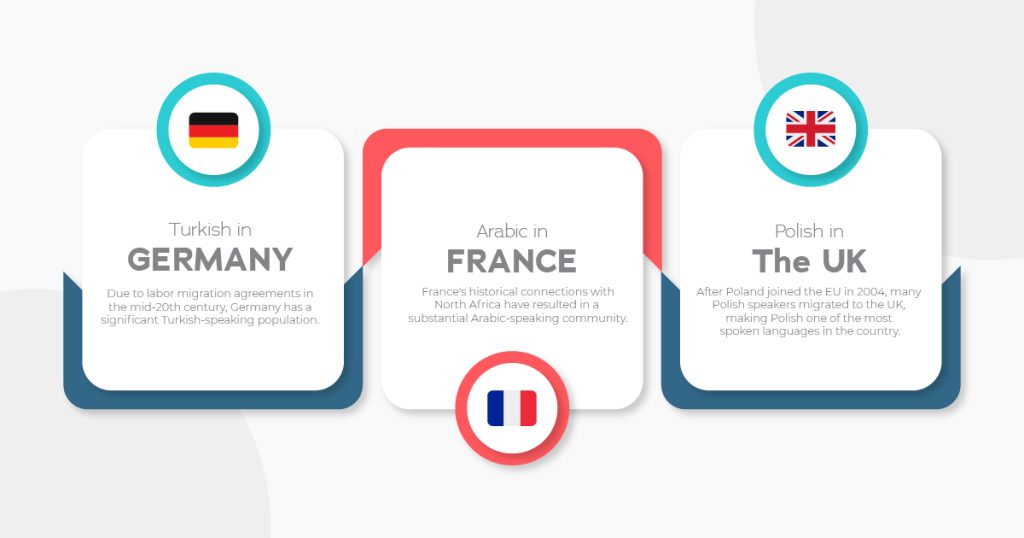 Globalization and the Internet (Late 20th Century – Present)
Globalization and the Internet (Late 20th Century – Present)